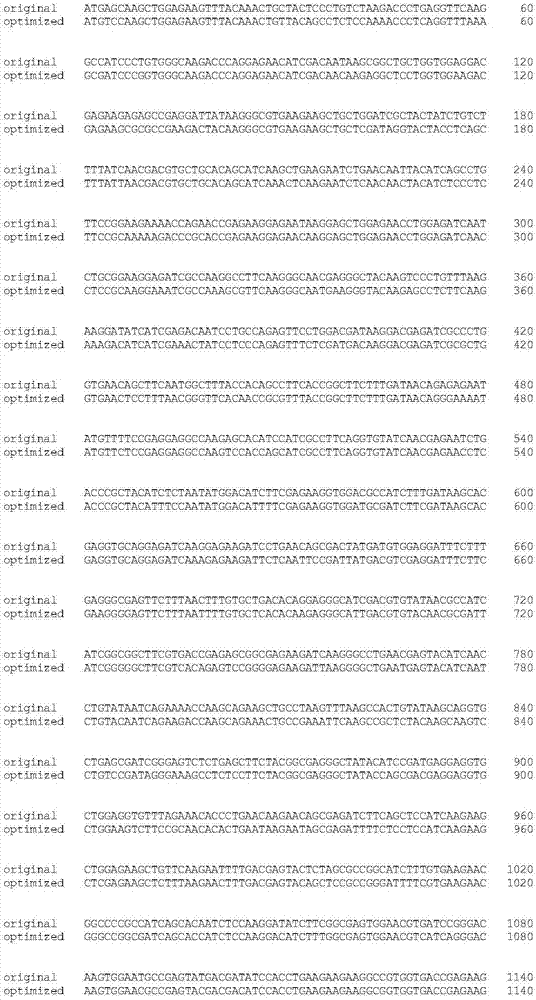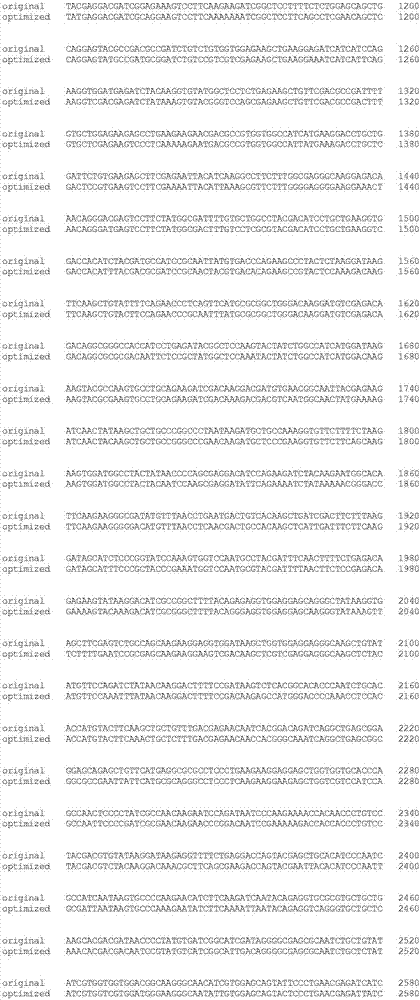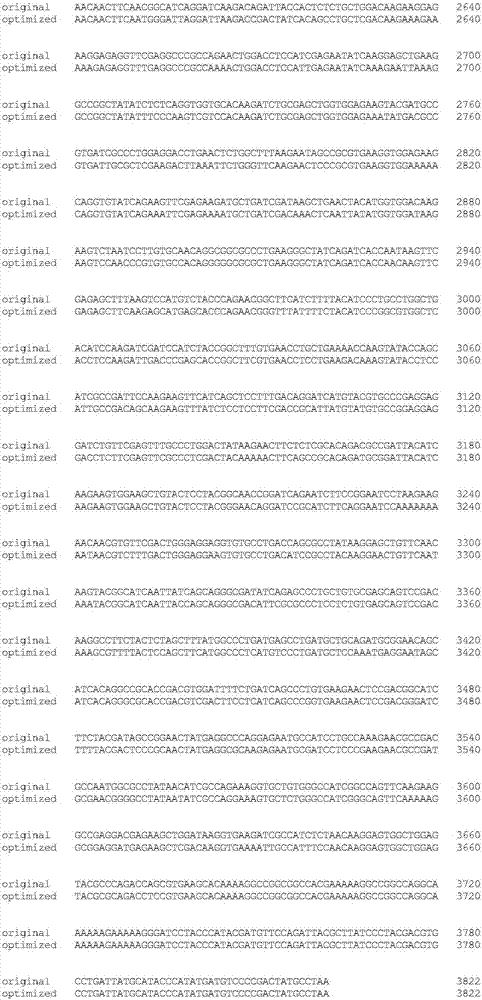PL-LbCpf1-RVR gene for recognizing specific sites in rice gene targeting and application thereof
A gene targeting and specific site technology, applied in the field of biotechnology and plant genetic engineering, can solve the problems of no established theory or method, limited number of LbCpf1 genes, etc.
- Summary
- Abstract
- Description
- Claims
- Application Information
AI Technical Summary
Problems solved by technology
Method used
Image
Examples
Embodiment 1
[0034] Embodiment 1——The acquisition of PL-LbCpf1-RVR gene
[0035] The inventors of the present application tried to transform the LbCpf1-RVR gene from Escherichia coli in various ways, unexpectedly obtained a new DNA sequence, and added a rice-preferred stop codon TGA to the end of the DNA sequence to form A new gene, the gene is named as PL-LbCpf1-RVR, the sequence is shown in SEQ ID NO: 1, see the sequence comparison with LbCpf1-RVR figure 1 .
[0036] Further analysis of its base composition, the results are shown in Table 2. It is known from Table 2 that the GC content of PL-LbCpf1 is as high as 53.06%, significantly higher than that of LbCpf1 which is 50.09%. In this way, the gene structure is more stable, because 3 hydrogen bonds can be formed between GC and 2 between AT.
[0037] Table 2 Gene base composition analysis of PL-LbCpf1-RVR and LbCpf1-RVR.
[0038]
[0039] Analysis-RVR The protein amino acid sequence encoded by LbCpf1-RVR and LbCpf1-RVR genes, the ...
Embodiment 2
[0041] Example 2—Construction of Plant Targeting Vector Containing PL-LbCpf1-RVR Gene
[0042] From Escherichia coli XL-blue containing the PUC57-AMP-PL-LbCpf1-RVR vector, use the Axygen plasmid extraction kit to extract the plasmid, digest with NotI / SacI, and recover the PL-LbCpf1-RVR fragment. At the same time, NotI / SacI enzyme was used to linearize pHUN600, recover pHUN600, and connect the above-mentioned PL-LbCpf1-RVR fragment and pHUN600 fragment with T4 ligase (purchased from TaKaRa Company) to obtain the plant expression vector pHUN600-PL-LbCpf1 -RVR( image 3 ), named pHUN 6b11.
[0043] Select the nucleotide sequence of position 6370-6398 in rice DL gene (LOCOs03g0215200) TATC AAAGCTGCCAAGCCAGATATCCCTCACAG, (the underlined part is the TATC part in the 5'TATV-(N)X-3' structure), as the targeting site. The target site sequence was fused to pHUN6b11 to form pHUN6b11-DL. The plant expression vector was transformed into Agrobacterium tumefaciens EHA105 strain (preserv...
Embodiment 3
[0044] Example 3—the genetic transformation of rice using pHUN6b11-DL as a targeting vector and the acquisition of mutants.
[0045] 1. Induction and pre-culture of mature embryo callus
[0046] The mature seeds of Nipponbare (the Paddy Rice Research Institute of Anhui Academy of Agricultural Sciences are preserved) are shelled, and the seeds with normal appearance and cleanness without mildew are selected, shaken for 90 sec with 70% alcohol, and pour off the alcohol; then use 50% sodium hypochlorite ( The concentration of available chlorine in the stock solution is greater than 4%. Add 1 drop of Tween20) solution per 100 milliliters to clean the seeds, and shake for 45 minutes (180 r / min) on a shaker. Pour off the sodium hypochlorite, wash with sterile water 5-10 times until there is no smell of sodium hypochlorite, finally add sterile water, soak overnight at 30°C. Use a scalpel to separate the embryos along the aleurone layer, put the scutellum up on the induction medium (...
PUM
 Login to View More
Login to View More Abstract
Description
Claims
Application Information
 Login to View More
Login to View More - R&D
- Intellectual Property
- Life Sciences
- Materials
- Tech Scout
- Unparalleled Data Quality
- Higher Quality Content
- 60% Fewer Hallucinations
Browse by: Latest US Patents, China's latest patents, Technical Efficacy Thesaurus, Application Domain, Technology Topic, Popular Technical Reports.
© 2025 PatSnap. All rights reserved.Legal|Privacy policy|Modern Slavery Act Transparency Statement|Sitemap|About US| Contact US: help@patsnap.com



